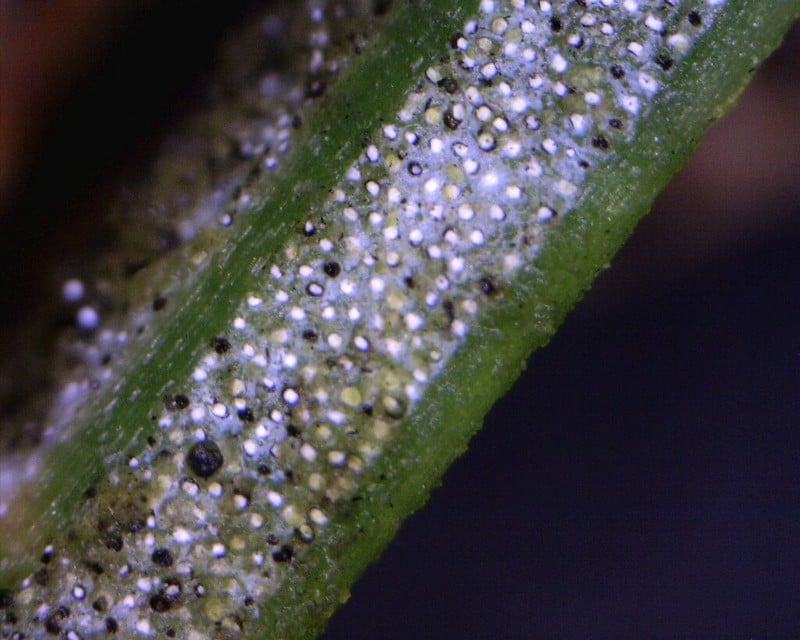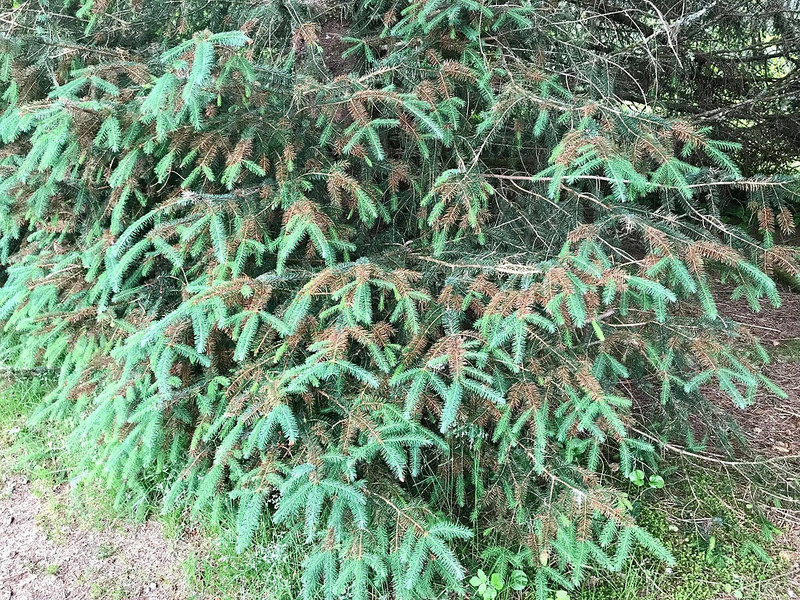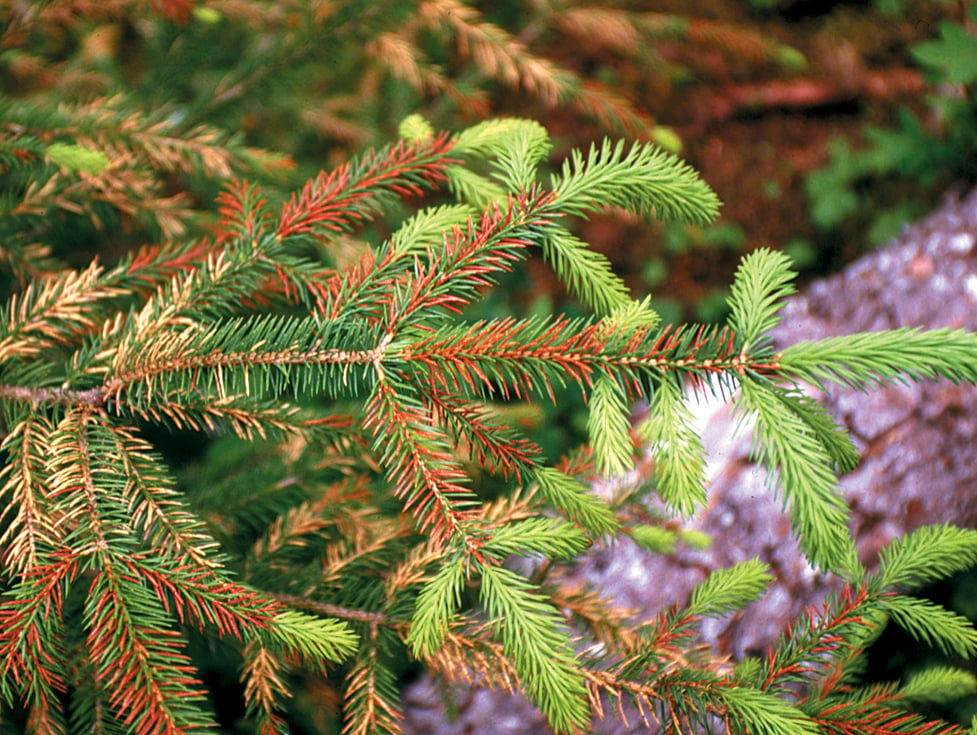Rhizosphaera needle cast, caused by the fungus Rhizosphaera kalkhoffii, is a prevalent disease that affects several species of spruce trees. This fungal pathogen targets the trees’ needles, leading to discoloration, premature shedding, and ultimately, diminished tree health and even branch death.
Identifying Rhizosphaera Needle Cast Symptoms
- Small black bumps (spores) will be visible on infected needles.
- Fewer needles will be present near the trunk of the affected tree.
- Lower branches will likely see signs of infection first as the pathogen travels up the tree.
- Discoloration, with colors ranging from purple to yellow and brownish hues.
- Premature shedding, which will occur in late summer to early fall.

How Rhizosphaera Forms and Spreads
Rhizosphaera needle cast typically begins its lifecycle during periods of high humidity and moderate temperatures. Its fungal spores, known as conidia, appear on infected needles and within fruiting bodies called pycnidia. These spores grow on the surface of infected needles, often appearing as black dots or bumps.
Once established, Rhizosphaera needle cast spreads within the tree canopy through several mechanisms. During wet weather conditions, the pycnidia (fruiting bodies) release conidia (spores), which are dispersed by rainwater and wind. Rain facilitates the dispersal of fungal spores from infected needles to healthy ones, and wind will carry spores over short distances, promoting the spread of the pathogen within the same tree or to neighboring trees.
After landing on foliage, the spores germinate and penetrate the needles’ stomas or enter through open wounds, causing the infection to spread. The fungus then gradually causes discoloration and necrosis.
Rhizosphaera Needle Cast Treatment
Addressing and eliminating Rhizosphaera needle cast requires liquid fungicide treatments. Several active ingredients/products are effective in managing this disease, and spray applications or tree injection will be needed to control it. It’s important to note that Rhizosphaera can be difficult to combat, and will most likely require multiple applications regardless of treatment method.
Make the first application in the late spring or into the first weeks of summer when the buds break and new needles start to emerge. Make a second application three weeks to one month after the initial application, and a third application may be necessary 3-4 weeks after the second.
Foliar Spray
Several contact and systemic fungicides are effective against Rhizosphaera, such as:
- Chlorothalonil-Zn (active ingredient: chlorothalonil, contact)
- Tourney (active ingredient: metconazole, systemic)
- Enclave (active ingredient: thiophanate-methyl, systemic)
- Eagle 20EW (active ingredient: myclobutanil, systemic)
A combination of chlorothalonil, which is widely recommended for needle cast, and Tourney, Eagle, or propiconazole (with Tourney as the first choice) will provide effective control. These products are typically applied as foliar sprays and are effective in preventing fungal colonization of needles.
Tree Injection
Tree injections involve fungicides being injected into the trunks of infected trees. Tree injection is an option with some fungicides, but chemistry is translocated into the needles and is not delivered directly. Products containing propiconazole or tebuconazole are effective and commonly used for tree injections.

Application Guidelines
Regardless of the chosen treatment method, proper application is essential to maximize effectiveness. Always read and follow label instructions for information on use rates, timing, and more.
- When applying systemic/contact treatments such as foliar sprays, ensure thorough coverage of all foliage, including the undersides of needles.
Preventing the Spread
While chemical treatments are the most important aspect of controlling Rhizosphaera, there are other things lawn care professionals can do to prevent its spread.
Unfortunately, the threat of Rhizosphaera is not over when the infected needles fall. Its spores can persist in fallen needles and infected debris on the ground, continuing the cycle, particularly in areas with dense tree populations. Maintenance activities, such as pruning, can also inadvertently aid the spread of Rhizosphaera needle cast by creating wounds that provide entry points for the pathogen. Additionally, contaminated pruning tools or other equipment can transmit fungal spores between trees. Removing fallen needles and thoroughly cleaning tools used on infected trees can help prevent the spread of the disease.
Combating Rhizosphaera Needle Cast
Rhizosphaera needle cast poses a significant challenge to lawn care professionals. Not only does it negatively impact tree health and appearance, but it also spreads rapidly. Fungicide applications and proactive maintenance practices can help minimize the pathogen’s impact on spruce populations. To learn more about controlling Rhizosphaera and for treatment recommendations, reach out to your ATS rep.












